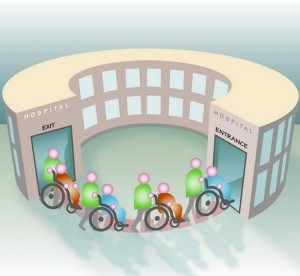Hospital Readmissions: What are the Factors?
No hospital will ever achieve a zero readmission rate–nor would they want to, as it may be an indicator of poor quality of care. However, there are many factors that lead to higher readmission rates–some of which can be avoided or at least more properly managed. It’s costly to avoid the issue–we recently shared how readmissions result in a $26B hole each year.
In today’s post, we’ll discuss some of those factors as well as how they can be addressed.
Why so many readmissions?
With the continuum of care is disjointed, patients offer suffer the consequences. Because of complex (and/or multiple) conditions, many patients see five or more different physicians on a regular basis. That fact alone leads to missing information, poor communication, and oversight that leads to higher readmission rates. And when patients enter a healthcare system through different departments and inpatient or outpatient care, doctors often miss out on the patient’s social history as well.
However, there are ways to compete with the forces that contribute to readmissions.
1. Reducing systemic stumbling points
Stumbling points that lead to readmissions might be:
- 911 use when it’s not necessary
- Going to the ER when it’s not necessary
- Inadequate care coordination
In many cases, these can be righted by implementing a home health care provider or a private health plan that focuses on boosting communication between doctor and patient.
2. Better discharge planning
Having a proper discharge plan in place means that patients have prescriptions refilled, appointments are scheduled, and a transition plan has been established. This makes the hand-off run more smoothly and efficiently.
3. Targeting high-risk populations
If data is collected that helps providers identify and care for high-risk patients, hospital readmissions can be better managed through preparation. Through telemedicine, home visits, and other proactive practices, hospital readmissions can be dramatically impacted.
4. Studying the data
Providers can better identify where challenges lie by studying the statistics on past hospital readmissions. When positive numbers are achieved, this is also an excellent marketing tool that increases hospital value.
5. Payment reforms
Gainsharing, coding changes, claim denial management, bundled payments, and reimbursement rates can all be examined as different ways to decrease readmissions. The verdict is still out on which of these is most effective, but all of them work toward keeping patients healthy and out of the hospital.
The bottom line
Reducing readmissions requires all players to be on board. Everyone from the billing department to the physicians themselves have to be aware of the proper protocols and follow them to the letter.
What practices have you noticed that lead to lower readmission rates?






